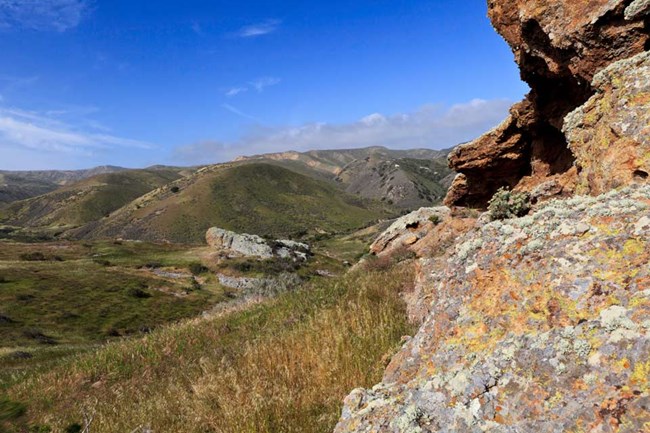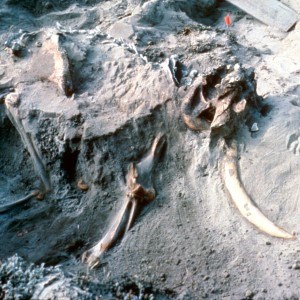
Beneath the vegetation blanketing much of Channel Islands National Park are many layers of earth and rock. At first glance these land-based physical resources are little more than the foundation of a captivating landscape. Upon closer inspection, however, they start to reveal their secrets. A huge diversity of geologic formations, from pillow lava and lava “bombs” to sedimentary rock layers, marine terraces, and chert deposits, all help tell the story of the Channel Islands’ past dating back more than 100 million years. It is an often dramatic tale of colliding plates, misaligned magnetic particles, volcanic activity, and not-so-subtle changes in climate and sea level. The various soils found in Channel Islands National Park have their own stories to share, largely by way of erosion patterns. Erosion can shed light on natural processes like wind, rain and earthquakes, as well as on the effects that humans have had on the landscape. The introduction of domestic animals to the Channel Islands, for instance, resulted in the over-consumption of the islands’ vegetation, leaving the soil below exposed to the elements in many areas. This in turn led to severe erosion and other changes in soil quality across the islands. 
Fossils and other paleontological resources hidden among rocks and soils help to complete our understanding of the Channel Islands’ past by providing information about the plants and animals that lived throughout history. Since the islands were never connected to the California coast they have also been uniquely isolated laboratories of evolution making studies of their paleontological resources even more valuable. The story of the now extinct pygmy mammoth, for example, is increasingly well-understood thanks to studies of their fossils in combination with other paleontological and geological evidence of what conditions were like on the islands as they evolved from their much larger mainland ancestors. While we have learned much about Channel Islands National Park’s past from studying its soils, rock formations and paleontological treasures, much has also been learned about how these resources support and interact with plant and animal communities living in the park today. This sort of information, such as data about which native plants grow in which soil types, helps National Park Service personnel make important decisions about how best to restore and protect both the physical and natural resources throughout the park for generations to come. |
Last updated: June 21, 2016
